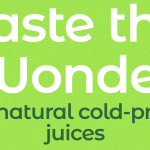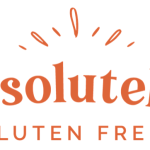Nutritional value and chemical composition.
The table shows the content of nutrients (calories, proteins, fats, carbohydrates, vitamins and minerals) per 100 grams edible part.
| Nutrient | Quantity | Norm** | % of the norm in 100 g | % of the norm in 100 kcal | 100% normal |
| Calorie value | 227 kCal | 1684 kCal | 13.5% | 5.9% | 742 g |
| Proteins | 25.1 g | 76 g | 33% | 14.5% | 303 g |
| Fats | 14.1 g | 56 g | 25.2% | 11.1% | 397 g |
| Water | 60 g | 2273 g | 2.6% | 1.1% | 3788 g |
| Ash | 0.8 g | ~ | |||
| Vitamins | |||||
| Vitamin A, RE | 70 μg | 900 μg | 7.8% | 3.4% | 1286 g |
| Retinol | 0.07 mg | ~ | |||
| Vitamin B1, thiamine | 0.22 mg | 1.5 mg | 14.7% | 6.5% | 682 g |
| Vitamin B2, riboflavin | 0.3 mg | 1.8 mg | 16.7% | 7.4% | 600 g |
| Vitamin B4, choline | 65.9 mg | 500 mg | 13.2% | 5.8% | 759 g |
| Vitamin B6, pyridoxine | 0.62 mg | 2 mg | 31% | 13.7% | 323 g |
| Vitamin B9, folate | 6 μg | 400 μg | 1.5% | 0.7% | 6667 g |
| Vitamin B12, cobalamin | 0.36 μg | 3 μg | 12% | 5.3% | 833 g |
| Vitamin C, ascorbic | 2.3 mg | 90 mg | 2.6% | 1.1% | 3913 g |
| Vitamin D, calciferol | 0.2 μg | 10 μg | 2% | 0.9% | 5000 g |
| Vitamin D3, cholecalciferol | 0.2 μg | ~ | |||
| Vitamin E, alpha tocopherol, TE | 0.7 mg | 15 mg | 4.7% | 2.1% | 2143 g |
| Vitamin K, phylloquinone | 4.2 μg | 120 μg | 3.5% | 1.5% | 2857 g |
| Vitamin PP, NE | 7.92 mg | 20 mg | 39.6% | 17.4% | 253 g |
| Betaine | 9.1 mg | ~ | |||
| Macronutrients | |||||
| Potassium, K | 216 mg | 2500 mg | 8.6% | 3.8% | 1157 g |
| Calcium, Ca | 15 mg | 1000 mg | 1.5% | 0.7% | 6667 g |
| Magnesium, Mg | 22 mg | 400 mg | 5.5% | 2.4% | 1818 g |
| Sodium, Na | 52 mg | 1300 mg | 4% | 1.8% | 2500 g |
| Sulfur, S | 251 mg | 1000 mg | 25.1% | 11.1% | 398 g |
| Phosphorus, P | 279 mg | 800 mg | 34.9% | 15.4% | 287 g |
| Trace Elements | |||||
| Iron, Fe | 4.43 mg | 18 mg | 24.6% | 10.8% | 406 g |
| Copper, Cu | 592 μg | 1000 μg | 59.2% | 26.1% | 169 g |
| Selenium, Se | 21.8 μg | 55 μg | 39.6% | 17.4% | 252 g |
| Zinc, Zn | 3.1 mg | 12 mg | 25.8% | 11.4% | 387 g |
| Sterols | |||||
| Cholesterol | 86 mg | max 300 mg | |||
| Saturated fatty acids | |||||
| Saturated fatty acids | 3.955 g | max 18.7 г | |||
| 12: 0 Lauric | 0.047 g | ~ | |||
| 14: 0 Myristic | 0.117 g | ~ | |||
| 16: 0 Palmitic | 2.563 g | ~ | |||
| 18: 0 Stearin | 1.03 g | ~ | |||
| Monounsaturated fatty acids | 4.891 g | min 16.8 г | 29.1% | 12.8% | |
| 16: 1 Palmitoleic | 0.725 g | ~ | |||
| 18: 1 Olein (omega-9) | 4.119 g | ~ | |||
| 20: 1 Gadoleic (omega-9) | 0.012 g | ~ | |||
| Polyunsaturated fatty acids | 3.487 g | from 11.2 to 20.6 | 31.1% | 13.7% | |
| 18: 2 Linoleic | 2.691 g | ~ | |||
| 18: 3 Linolenic | 0.492 g | ~ | |||
| 20: 4 Arachidonic | 0.164 g | ~ | |||
| 20: 5 Eicosapentaenoic (EPA), Omega-3 | 0.012 g | ~ | |||
| Omega-3 fatty acids | 0.539 g | from 0.9 to 3.7 | 59.9% | 26.4% | |
| 22: 5 Docosapentaenoic (DPC), Omega-3 | 0.035 g | ~ | |||
| Omega-6 fatty acids | 2.855 g | from 4.7 to 16.8 | 60.7% | 26.7% |
The energy value is 227 kcal.
Quail cooked rich in vitamins and minerals such as: vitamin B1 – 14,7%, vitamin B2 – 16,7%, choline – 13,2%, vitamin B6 – 31%, vitamin B12 – 12%, vitamin PP – 39,6%, phosphorus – 34,9%, iron – 24,6%, copper – 59,2%, selenium – 39,6%, zinc – 25,8%
- Vitamin B1 is part of the most important enzymes of carbohydrate and energy metabolism, which provide the body with energy and plastic substances, as well as the metabolism of branched-chain amino acids. Lack of this vitamin leads to serious disorders of the nervous, digestive and cardiovascular systems.
- Vitamin B2 participates in redox reactions, enhances the color sensitivity of the visual analyzer and dark adaptation. Insufficient intake of vitamin B2 is accompanied by a violation of the condition of the skin, mucous membranes, impaired light and twilight vision.
- Mixed is a part of lecithin, plays a role in the synthesis and metabolism of phospholipids in the liver, is a source of free methyl groups, acts as a lipotropic factor.
- Vitamin B6 participates in the maintenance of the immune response, inhibition and excitation processes in the central nervous system, in the conversion of amino acids, in the metabolism of tryptophan, lipids and nucleic acids, contributes to the normal formation of erythrocytes, maintenance of the normal level of homocysteine in the blood. Insufficient intake of vitamin B6 is accompanied by a decrease in appetite, a violation of the condition of the skin, the development of homocysteinemia, anemia.
- Vitamin B12 plays an important role in the metabolism and conversion of amino acids. Folate and vitamin B12 are interrelated vitamins and are involved in blood formation. Lack of vitamin B12 leads to the development of partial or secondary folate deficiency, as well as anemia, leukopenia, thrombocytopenia.
- Vitamin PP participates in redox reactions of energy metabolism. Insufficient vitamin intake is accompanied by disruption of the normal state of the skin, gastrointestinal tract and nervous system.
- Phosphorus takes part in many physiological processes, including energy metabolism, regulates acid-base balance, is a part of phospholipids, nucleotides and nucleic acids, is necessary for the mineralization of bones and teeth. Deficiency leads to anorexia, anemia, rickets.
- Iron is a part of proteins of various functions, including enzymes. Participates in the transport of electrons, oxygen, ensures the course of redox reactions and activation of peroxidation. Insufficient consumption leads to hypochromic anemia, myoglobin-deficient atony of skeletal muscles, increased fatigue, myocardiopathy, atrophic gastritis.
- Copper is a part of enzymes with redox activity and involved in iron metabolism, stimulates the absorption of proteins and carbohydrates. Participates in the processes of providing the tissues of the human body with oxygen. The deficiency is manifested by disorders in the formation of the cardiovascular system and skeleton, the development of connective tissue dysplasia.
- Selenium – an essential element of the antioxidant defense system of the human body, has an immunomodulatory effect, participates in the regulation of the action of thyroid hormones. Deficiency leads to Kashin-Beck disease (osteoarthritis with multiple deformities of the joints, spine and extremities), Keshan disease (endemic myocardiopathy), hereditary thrombastenia.
- Zinc is a part of more than 300 enzymes, participates in the processes of synthesis and decomposition of carbohydrates, proteins, fats, nucleic acids and in the regulation of the expression of a number of genes. Insufficient consumption leads to anemia, secondary immunodeficiency, liver cirrhosis, sexual dysfunction, and fetal malformations. Recent studies have revealed the ability of high doses of zinc to disrupt copper absorption and thereby contribute to the development of anemia.
Tags: calorie content 227 kcal, chemical composition, nutritional value, vitamins, minerals, what is useful Quail, cooked, calories, nutrients, useful properties Quail, cooked














